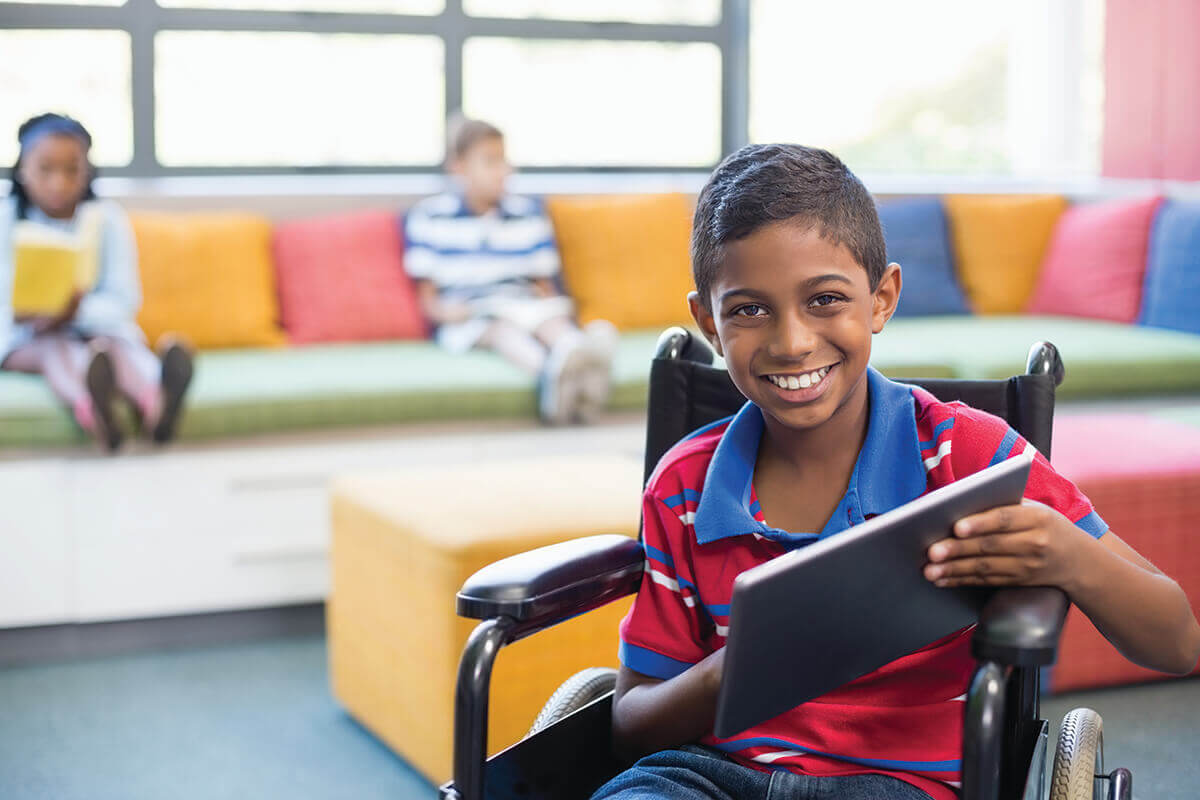Special Section
The Inclusive Resources Guide for Parents
The Baltimore area has a ton of resources for children with disabilities and their families.
By Michele Wojciechowski — May 2023
When you have children with intellectual, developmental, physical, or multiple disabilities, how do you get them the help and resources that they need to prosper? Whether you’re looking for day care, choosing a school, or finding other activities available to them, the Baltimore area has a ton of resources for children with disabilities and their families. Here’s a look at some of them.
 ometimes when a child is born, a disability presents itself immediately. In fact, some disabilities, like spina bifida, may be discovered during the mother’s sonograms. Others, though, may not become obvious until the baby begins to miss important milestones in their development.
ometimes when a child is born, a disability presents itself immediately. In fact, some disabilities, like spina bifida, may be discovered during the mother’s sonograms. Others, though, may not become obvious until the baby begins to miss important milestones in their development.
When that happens, where do you go for help?
If you’re not sure if your child has actually missed a milestone or not, the first place you can check is with the Maryland Infants and Toddlers Program, which includes infant milestones on its website. This program operates throughout every county in Maryland and provides free services for children from birth through three years old who have developmental disabilities, delays, or other special health needs.
“From the time kids are born, they can be referred for a variety of different reasons to obtain services . . .”
For example, if parents of a child with disabilities live in Baltimore County, they can contact the Baltimore County Infants and Toddlers Program (BCITP), which will help them develop an Individualized Family Service Plan (IFSP), a precursor to the Individualized Education Plan (IEP).
“From the time kids are born, they can be referred for a variety of different reasons to obtain services,” says Allison Myers, executive director of the Department of Special Education for Baltimore County Public Schools. If the child is premature, they can also be referred for screening and for the parents to access support.
Families can go directly through the school system or have a health care provider refer them. “You know your child best. If there’s a concern, then you want to reach out for a consultation and screening,” says Myers. “We have a variety of providers who work to support children in their home setting to provide services to support the child and the family during that time.”

Before a child is eligible for school, providers such as physical and speech therapists come to the child’s home to give services. When a child is three years old, staff determine whether or not they are able to transition to an IEP, which means that they’re eligible for special education. “Or the family can decide to do an extended IFSP, which is where they could stay on, and then transition at their fourth birthday,” explains Myers.
Early intervention is key, says Myers. “It’s really important for us to be collaborative with our families, making sure that supports are provided and students are able to make progress,” she says.
As the students get older, the family and the IEP group make decisions as to whether the child will be mainstreamed at their local elementary, middle, and high schools, take special education classes, or need to attend nonpublic or private separate day schools.
Children with disabilities are allowed to stay in the public school system until they are 21. Once they turn 17 or 18 (whatever age they would be seniors in school), their experiences vary. Myers says that they may continue in high school for a longer period of time if they need more in order to complete their courses. They also, though, may move into community-based programs that will help them with work or job skills. Or they may have a mix of both—spend part of a day in school and then the other part in a community program or job site.

A CLEARINGHOUSE FOR INFORMATION
For parents who need more information or services for children with intellectual or developmental disabilities, there’s Resource Find, a project of the Maryland Center for Developmental Disabilities, which is located at the Kennedy Krieger Institute.
“It’s really important for us to be collaborative with our families, making sure that supports are provided and students are able to make progress.”
“I get calls all the time when parents say, ‘I think my child may have autism. What should I do? What kind of resources are available?’” says Kristine Nellenbach, program manager for Resource Finder. If they haven’t contacted their local school system, Nellenbach refers them there.
Often, she will ask the callers what issues they are seeing with the child and what else they would like to address. Nellenbach then gives them referrals to whatever providers can best help the child or other organizations that can serve them as well.
When parents call and say that they no longer want their children in public schools, she refers them to the Maryland Association of Nonpublic Special Education Facilities (MANSEF). “They represent over 90 nonpublic, special education schools throughout the state of Maryland, and all of these schools serve students with a wide range of disabilities that are intellectual, developmental, or physical,” says Nellenbach.
“A parent is an equal member of the team. So they can always request and indicate what they feel is best for their child. Ultimately, it is an IEP team decision as far as where the services and supports are provided,” says Myers.
No matter where your child with disabilities is educated, what’s crucial, Myers says, is working together. “I think it’s important for families to know that this is a partnership where we encourage them to reach out for support.”
